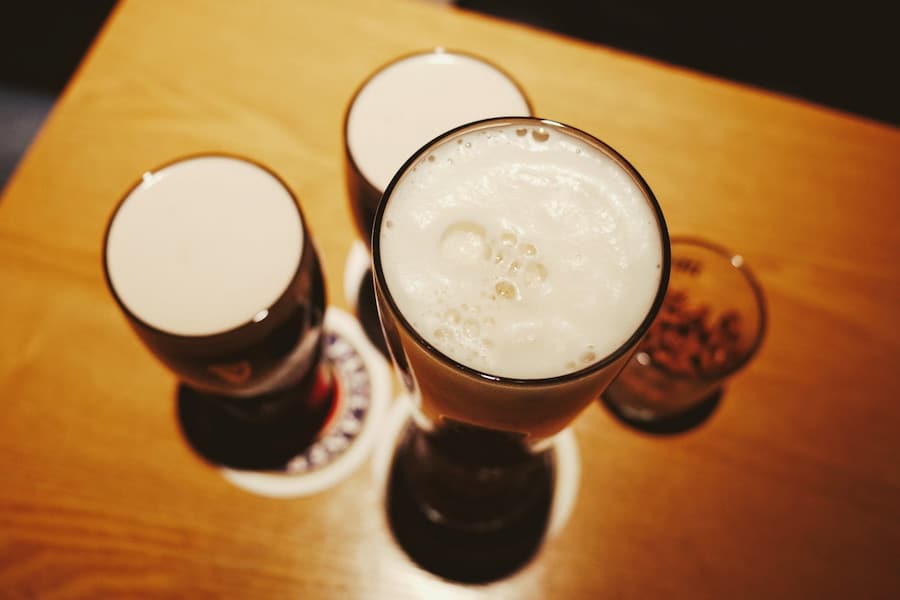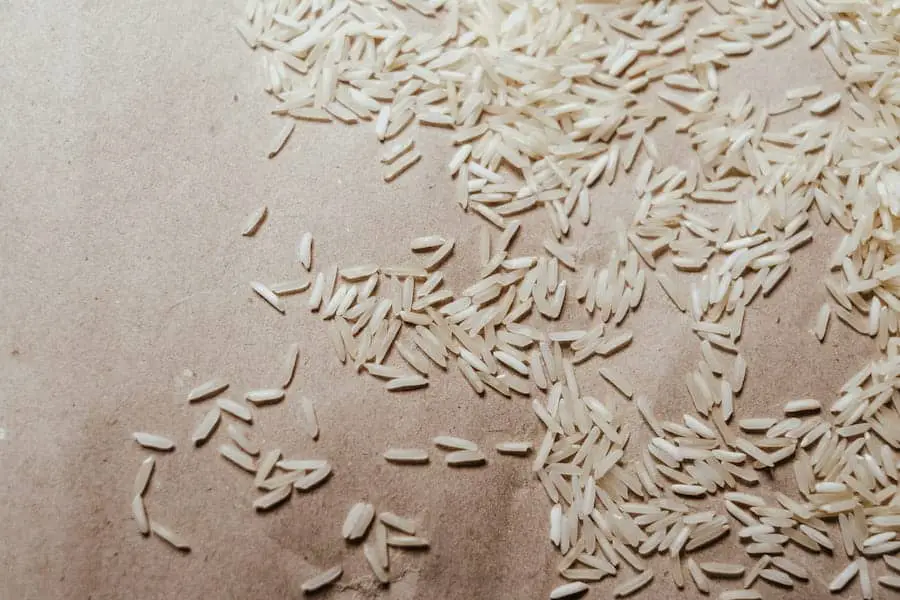If you buy something through a link in our posts, we may get a small share of the sale.
Have you ever wondered what makes beers different? There are four basic ingredients used in beer making. As a homebrewer, you’re constantly looking for ways to improve the quality of your brew. One of the most common ways of enhancing the taste of beer is by using adjuncts.
So, what are adjuncts in beer making?
Contents
What Are Adjuncts in Beer Making?
In beer making, adjuncts are anything added to a beer other than the traditional four ingredients (malted barley, yeast, hops, and water). Adjuncts can be in liquid or solid and are grouped into four categories:
- Flavorings such as spices and fruits
- Grains like corn and oats
- Sugars such as molasses and honey
- Specific bacteria

What Is the Role of Adjuncts in Beer Processing?
Adjuncts in a beer are used to enhance the properties of the four essentials (hops, yeast, water, and malted barley) used in beer making. Adjuncts may:
- Increase the initial sugar amount in the wort
- Add a unique flavor or aroma to beer
- Alter the way that beer ferments
Examples of Adjuncts Used in Beer Making
Adjuncts provide homebrewers the opportunity to craft beers with their desired head retention, clarity, and mouthfeel. The following adjuncts contribute to snappier tasting, improved physical stability, and superior chill-proof quality beers.
Fruit and Vegetables
You can easily note the use of fruits as adjuncts in beers. Different fruits add color, aroma, flavor, and additional sugar to increase the alcohol content. Examples of fruits used as adjuncts are apples, grapes, and pineapple. Fruits are simple to use as adjuncts.
Vegetables can also change the flavor in beers. For example, hot pepper changes the sweetness in a beer to create a bitter-sweet flavor. The use of vegetables is less common compared to that of fruits.
Corn
Corn is a popular grain adjunct and can be used in varied ways. It adds flavor, gives color, enhances head retention, and lowers the protein content. You can add it into the mash directly because it does not require a protein rest.
In terms of compatibility, corn blends well with low-adjunct American lagers, strong Belgian ales like Grand Cru, and British bitters. Corn provides a grainy sweetness to complement Belgian ales’ esters and hop flavors. Specifically, it works well with American Weiss beer, Kentucky common beer, and the Berliner Weiss.
Rice
Rice offers beer a dry and neutral flavor. It is more suitable for lighter styles like pilsner and light lagers and works well with stronger beers to produce a light body. When adding rice hulls, add sufficient water to the cereal mash to prevent sticking.
James Page Wild Lager is an example of rice-blended beer. Different varieties of rice produce differently tasting beers. For example, the Indian basmati rice adds a characteristic aroma to light lagers. Wild rice mostly harvested in North America has a nutty taste when cooked and is more expensive than common adjuncts.

Herbs and Spices
Herbs and spices are commonly used in seasonal beers, especially winter and autumn beers. You can blend herbs and spices with beer at any point in the beer-making process. You can pitch them as a whole, dip them inside using porous bags or hang them in the brewing tanks.
Belgian white beer uses spice adjuncts like coriander, which contributes to its subtle aroma and flavor. Spices like allspice, nutmeg, or ginger are often used in a pumpkin beer.
Oats
Oats are commonly used as adjuncts with oatmeal stouts and witbiers. They provide a silky texture to beers. The amount of oatmeal you add to a witbier grist should not be more than 5%, while it can be between 10% to 15% in oatmeal stouts.
Examples of oats are:
- Quick oats (pregelatinized)
- Steel-cut oats (non gelatinized thus need double mashing)
- Quaker oats
- Flaked oats
Sugar
Factory-processed sugar and common sugar obtained from plants like cane and beet are used to sweeten the beer. Brewers also use honey to boost the alcohol content in beers. Candy sugar is popular in Belgian ales.
Examples of sugar-based adjuncts include:
- Honey – increases honey aromatics and is added in post-fermentation.
- Different sugars contribute to varied beer styles and gravities. For example, dark candy sugar gives distinctive raisin-like caramel flavors to many dark Belgian-style beers.
Chocolate, Coffee, and Tea
Chocolate, coffee, and tea blend well with the natural flavor of dark beers. They mix well with roasted flavors of porter and stout. Tea is less popular compared to coffee and chocolate.

How Are Adjuncts Used in Beer Making?
The use of adjuncts in beer-making has been on an upward trend. Whether to add adjuncts in beer making or not will depend on what value you wish to add to the beer. It will also depend on the type of adjunct you are using. There are several ways of using adjuncts.
For Value Addition Purposes
Adjuncts are used to extend the brewhouse yield. When you add adjuncts during the wort boiling stage in the beer-making process, they increase wort separation. They also lengthen the fermentation period.
Liquid Adjuncts
When using liquid adjuncts like syrups and sugars, add them during the wort stage. The enzyme invertase hydrolyzes sucrose to produce glucose, monosaccharides, and fructose. Examples of sugars are plant-extracted sugar. Depending on the processing conditions and type of enzyme, you can realize different products in terms of the fermentability degree.
Solid Adjuncts
If you use solid adjuncts like whole cereals, flakes, flour, or grits, add them during mashing. It will help digest malt or other exogenous enzymes into their component macromolecules. Different solid adjuncts require varying degrees of gelatinization temperature.
Solid adjuncts first need to be milled. They need to be superheated in cereal cookers. For example, you need about 500°F for whole grain to produce torrefied cereal. The adjunct is then passed through boiling and mixed with a less heated mash (113°F) to convert the starch into malt.
Related Questions
How Do You Add Adjuncts to a Stout?
You can incorporate adjuncts into a stout either before or after wood-aging. For delicate adjuncts like coffee, add the adjunct after the wood-aging process is done. Other adjuncts like coconut, hops, and cacao nibs degrade with time.
Is Fruit an Adjunct?
Different fruits can be used as adjuncts in beer making. They add aroma, color, sugar, and flavor to beer. Examples of fruit adjuncts are apples, raspberries, and pineapple.
Conclusion
Adjuncts enhance the characteristics of the four major components of a beer. They are fundamental in crafting beers that suit different needs and the likes of beer enthusiasts. They can alter the taste or appearance of a beer. Almost all beers depend on adjuncts for their different characteristics.

